Green architecture – Cohen Home in Lenado, Colorado
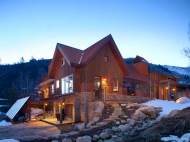 Cohen Home in Lenado, Colorado, is located on altitude of 2,636 meters (8650 feet) where there are only 4 and a half hours of sun per day in the dead of winter, manages to generate more power than needed. The off-grid Cohen Home is one of the most energy-efficient homes in the state with HERS index of -5, and it’s targeted to receive LEED-H Gold certification.
Cohen Home in Lenado, Colorado, is located on altitude of 2,636 meters (8650 feet) where there are only 4 and a half hours of sun per day in the dead of winter, manages to generate more power than needed. The off-grid Cohen Home is one of the most energy-efficient homes in the state with HERS index of -5, and it’s targeted to receive LEED-H Gold certification.
Designed by Green Line Architects, the 186 square meters (2000 square feet) home was built for Branden Cohen. Located in Lenado, above Woody Creek in local favorite, George Stranahan’s territory, and up the road from the old haunts of Hunter S. Thompson, the land was bought from Jack “Lumber Jack” Hogue who got title to the land from squatting on it (adverse possession) for 17 years. Cohen asked the team to move the original location of the house up the hill, where it could get more sun.
The photovoltaic (PV) system provides all of the necessary electricity, except for extended periods of clouds, rain or snow, when a back-up generator kicks in. The PV is enhanced with a sun tracking system which increases the efficiency by roughly 25 percent. An array of eight (4 foot x 10 foot) solar hot water panels provides space heating and heating for domestic water. These are paired with a storage tank, and a high-efficiency boiler as backup. The solar hot water system was taken off the roof for easier access and maintenance.
Re-use and recycling have become important considerations in green building design. Many of the materials from the cabin Lumber Jack’s original cabin, bathhouse and garage were deconstructed for use in the construction of the new home, such as the cotton insulation, bronze door hardware and exterior compact fluorescent (CFL) lighting fixtures. The majority of the wood materials in the home are FSC certified.
Structural Insulated Panels (SIPs) were used, which are delivered on-site pre-cut. Aside reducing the amount of waste on the site, the use of SIPs allows for a very high level of continuous insulation. The walls are R-40, the roof is R-60, and triple-pane windows are R- 8.54 (U-Value of 0.117). The insulation, combined with extremely low air infiltration (0.10 natural air changes per hour) makes for an ideal building “shell”.
David Houghton and August Hasz of Resource Engineering Group incorporated two Heat Recovery Ventilator units (HRV’s) into the home design that provide heat exchange, ventilation, and filtration. More than just an air delivery system, the heat exchange component allows cold outside air that is being brought in to be heated by the warm, stale air that is being exhausted.
“Although this house is literally built like a refrigerator, you could leave the house for months, and come back to a home that will smell fresh and clean”, said Houghton.
The Green Line Architects also took advantage of the newest available lighting products by incorporating LED-compatible fixtures into the home design. Over 90 percent of the light fixtures in the Cohen Home are LEDs, and the rest are compact and linear fluorescents.
All of the finishes are low toxicity and natural products. The slab black walnut benches, and door and window finishes were designed and crafted by local furniture maker David Rasmussen of David Rasmussen Design. Laura Bartells, of GreenWeaver, Inc., a local straw-bale and plaster expert, installed a dark, almost chocolate-colored natural earthen clay plaster on much of the interior walls.

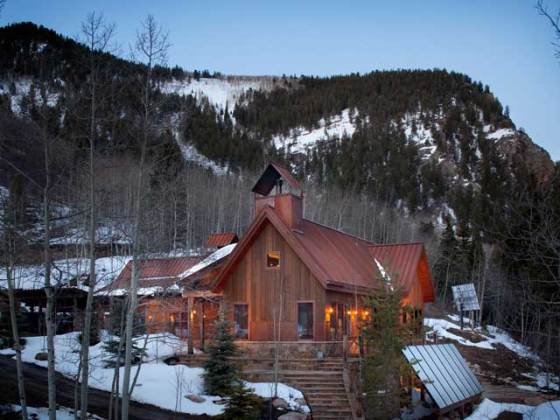
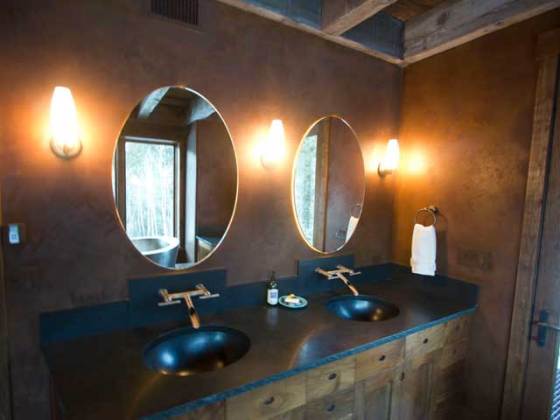
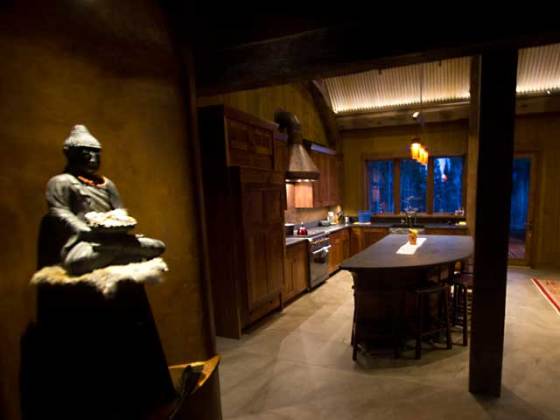
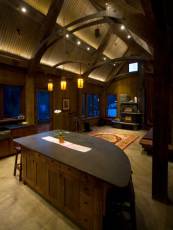








author
The home has received a HERS Index of -5. That means that it is 105% more efficient than a standard home. The Home Energy Rating System (HERS) index shows the energy efficiency of a home. For example, a score of 100 is a code-compliant home, based on the 2006 International Energy Conservation Code; a score of 50 would be a home that is 50% more energy-efficient than the baseline home; a score of zero is considered a Net-Zero Home, one that produces the same amount of energy on a net yearly basis as it uses.
One word – beautiful!